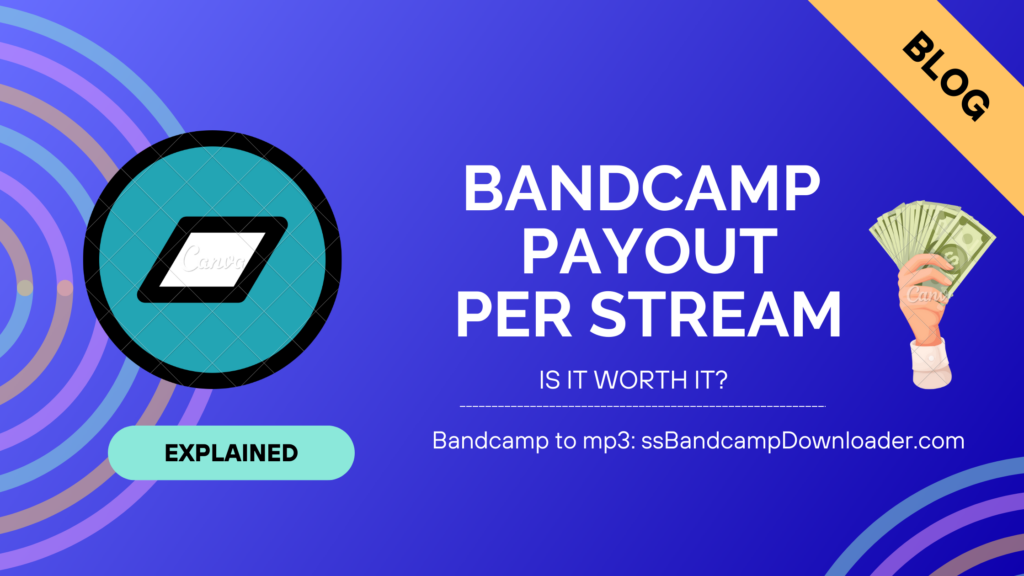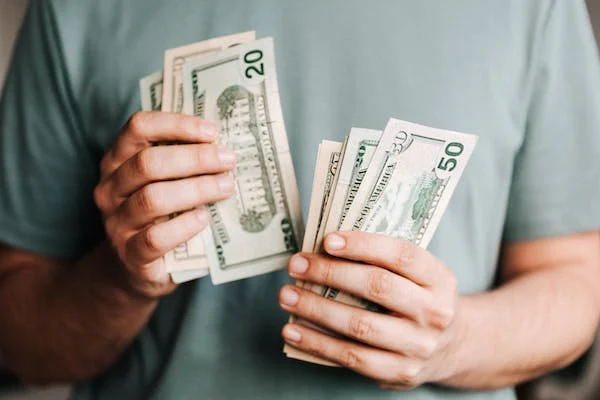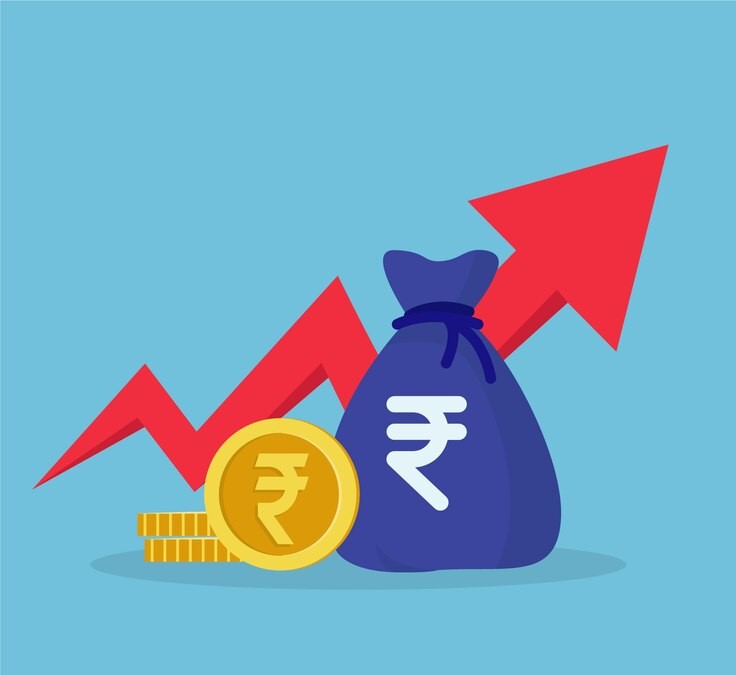In the ever-evolving landscape of digital music streaming, understanding how much artists earn per stream is a crucial aspect of their financial success. Bandcamp, a distinctive player in the music industry, stands out with its artist-friendly approach and transparent revenue model. But do you know how much does Bandcamp pay per stream to the artists for their efforts?
This article delves into the heart of the matter, aiming to provide clarity on Bandcamp’s payment structure. We will explore the intricacies of how Bandcamp calculates payments and, most importantly, how much it pays per stream. By the end of this article, you’ll have a comprehensive understanding of how artists can thrive on Bandcamp’s platform.

Bandcamp’s Revenue Model
Bandcamp’s revenue model sets it apart from the conventional streaming platforms. It offers artists a unique way to connect with their audiences and earn income from their music. Unlike platforms that primarily rely on advertising and subscription fees, Bandcamp allows artists to maintain greater control over their music and revenue.
On Bandcamp, artists can sell their music directly to their fans, including albums, singles, and even merchandise. This direct-to-fan approach eliminates the need for intermediaries and their associated fees. This empowers artists to receive a larger portion of the revenue generated from their work. Moreover, Bandcamp offers a space for artists to build a dedicated fan base and foster a deeper connection with their audience.
The platform’s “Name Your Price” feature is another distinctive aspect of its revenue model. This allows artists to set flexible pricing or let fans choose how much they want to pay for the music. This flexibility encourages support from both devoted fans and those discovering the artist’s work, further increasing artist income.
Bandcamp’s model promotes a sense of transparency and fairness. The platform is known for its commitment to giving artists a significant share of the revenue, which is something many artists find appealing. This unique approach aligns Bandcamp’s interests with those of independent musicians. Also, it creates a symbiotic relationship between the platform and its creators.
Bandcamp’s revenue model offers artists the autonomy to manage their music and financial affairs while fostering genuine connections with their supporters. This direct-to-fan approach and the “Name Your Price” feature contribute to Bandcamp’s reputation as a platform that prioritizes artists’ earnings. We’ll explore in more detail as we delve into how exactly Bandcamp calculates payments.
How Bandcamp Calculates Payments
Bandcamp’s unique approach to calculating payments is a major draw for artists seeking fair compensation for their music. Unlike many other streaming platforms that use complex algorithms and pay per stream, Bandcamp’s payment structure is designed to empower artists while maintaining transparency.
When a fan purchases an artist’s music or merchandise on Bandcamp, a significant portion of the sale goes directly to the artist. Bandcamp typically takes a 10-15% revenue share from digital sales, allowing artists to retain the majority of the income. This direct sales model ensures that artists receive a more substantial part of their earnings compared to traditional streaming platforms.

The “Name Your Price” feature, which allows fans to pay more if they choose, adds an extra layer of revenue flexibility. Some fans may choose to pay above the minimum set by the artist, providing an additional source of income. This feature can lead to fans generously supporting their favorite artists, further boosting the artist’s earnings.
Bandcamp also enables artists to sell physical merchandise alongside their music. This can include items like vinyl records, CDs, and clothing. Sales of these physical goods contribute to the artist’s overall income, making Bandcamp a comprehensive platform for artists to monetize their creations.
It’s important to note that Bandcamp’s payment structure is straightforward and transparent. Artists can easily track their earnings through the platform’s analytics, which provides detailed information about sales, fan engagement, and more. This transparency builds trust and gives artists a clear understanding of their financial performance on the platform.
Bandcamp’s payment calculation system focuses on direct sales, reasonable revenue shares, and flexible pricing, offering artists a more equitable way to earn from their music. With these principles in mind, it’s crucial to explore how much artists can actually earn per stream on Bandcamp. We will discuss in the next section.
The Per-Stream Payment Rate
One of the key questions on the minds of both artists and music enthusiasts is, “How much does Bandcamp pay per stream?” Unlike many mainstream streaming services that compensate artists based on the number of streams, Bandcamp operates differently.
Instead of a per-stream payment rate, Bandcamp primarily focuses on direct sales, which we discussed in the previous section. This means that the traditional notion of being paid a fraction of a cent per stream doesn’t apply to the Bandcamp model.

On Bandcamp, artists earn money when their fans buy their music, merchandise, or other offerings. This direct-to-fan approach ensures that artists receive a substantial portion of the revenue generated from these transactions. This setup eliminates the need for complex calculations based on streaming numbers, and artists can see more tangible returns from their work.
While Bandcamp doesn’t pay per stream in the traditional sense, it’s important to remember that the platform offers an alternative way for artists to monetize their music. The “Name Your Price” feature and the ability to sell both digital and physical products empower artists to control their pricing and, consequently, their earnings. This means that artists who have built a loyal fan base can benefit significantly from their supporters’ generosity.
Factors Affecting Artist Earnings
While Bandcamp’s payment structure revolves around direct sales and flexible pricing, several factors can influence an artist’s earnings on the platform. Understanding these factors is crucial for artists looking to maximize their income and build a successful presence on Bandcamp.
- Fan Base and Engagement: The size and dedication of an artist’s fan base play a significant role in their Bandcamp earnings. Artists with a loyal following are more likely to see higher sales. This is so because fans are often willing to pay above the minimum price set by the artist.
- Pricing Strategies: The artist’s pricing strategy is essential. Offering a “Name Your Price” option can be a powerful tool, as it allows fans to support the artist based on their perceived value of the music. Some fans may choose to pay more, which can boost an artist’s income.
- Diverse Offerings: In addition to music, Bandcamp allows artists to sell physical merchandise like vinyl records, CDs, and apparel. Diversifying offerings can increase an artist’s income, especially if they have a strong brand and visual identity.

- Music Quality and Appeal: The quality and appeal of an artist’s music naturally affect their sales. Engaging, well-produced music is more likely to attract fans and encourage purchases.
- Marketing and Promotion: Effective marketing and promotion are essential for driving traffic to an artist’s Bandcamp page. Utilizing social media, email marketing, and collaborations can help increase visibility and boost sales.
- Album Releases: Timing and frequency of album releases can also influence earnings. Artists often see spikes in sales and revenue when they release new music. They can leverage this to their advantage.
- Streaming vs. Downloads: Some artists may choose to offer streaming options alongside downloads. While streaming doesn’t directly translate to income like downloads, it can introduce new listeners to the artist’s work and potentially lead to sales.
- Genre and Niche: The genre and niche of an artist’s music can impact sales. Certain genres or niches may have a more dedicated fan base willing to spend more on music and merchandise.
In summary, several factors can influence an artist’s earnings on Bandcamp, and it’s crucial for artists to consider these factors as they manage their presence on the platform. Building a strong fan base, implementing effective pricing strategies, offering diverse products, and actively promoting their music are all essential elements in maximizing earnings on Bandcamp. In the following section, we will explore real-life examples of artists and their experiences on the platform.
Real-Life Examples
To gain a deeper understanding of how artists fare on Bandcamp, let’s explore some real-life examples of musicians who have found success and experienced the platform’s unique approach to earnings.
- Amanda Palmer: Known for her close connection with her fans, Amanda Palmer is a prime example of an artist who thrives on Bandcamp. She has used the “Name Your Price” feature to her advantage. hence, allowing fans to decide how much they want to pay for her music. Her approach has led to generous fan support, and she’s been able to fund successful projects while maintaining artistic control.
- Lucas Lee: This indie artist used Bandcamp to build a dedicated fan base and fund his music projects. By engaging with his fans and offering exclusive content, Lucas was able to monetize his music effectively, even with a relatively modest following.
- Khruangbin: The Texan band Khruangbin found success on Bandcamp with their unique blend of global influences. Their choice to offer merchandise alongside their music sales, including vinyl records, helped them generate significant revenue. The band’s captivating music, combined with their distinct branding, resonated well with their fans.
- Tara Kannangara: A jazz artist, Tara Kannangara, experienced Bandcamp’s benefits by connecting with her audience. She utilized the platform’s flexibility to offer her music at different price points, allowing fans to choose the price that felt right to them.
These examples illustrate the diverse paths artists can take to succeed on Bandcamp. Whether through unique pricing strategies, merchandise sales, fan engagement, or niche appeal, artists have used Bandcamp to their advantage to earn income and maintain artistic independence.
Tips for Maximizing Earnings on Bandcamp

For artists looking to make the most of their presence on Bandcamp and maximize their earnings, here are some practical tips to consider:
- Engage with Your Fan Base: Building a strong and engaged fan base is crucial. Respond to comments, messages, and emails. Show appreciation for your fans’ support and make them feel valued.
- Utilize the “Name Your Price” Feature: Consider using the “Name Your Price” option for your music. Allowing fans to pay what they want can lead to more generous contributions.
- Diversify Your Offerings: In addition to music, explore opportunities to sell merchandise like t-shirts, posters, vinyl records, and other physical items related to your music. Diversifying your offerings can boost your income.
- Promote Your Bandcamp Page: Actively promote your Bandcamp page through social media, your website, and email marketing. The more people know about your Bandcamp presence, the greater your sales potential.
- Release New Music: Timing your releases strategically can lead to spikes in sales. Consider releasing new material or exclusive content to keep your audience engaged and attract new fans.
- Collaborate and Cross-Promote: Collaborate with other artists or bands and cross-promote each other’s music on Bandcamp. This can expand your reach and introduce your music to new audiences.
- Utilize Fan-Funding and Crowdfunding: Consider running fan-funding campaigns or crowdfunding projects on Bandcamp to support specific creative endeavors. This can help you fund your music or merchandise production.
- Analyze Your Data: Use Bandcamp’s analytics tools to gain insights into your fan base, sales, and listening trends. This data can inform your strategies and help you make informed decisions.
- Stay Active and Consistent: Keep your Bandcamp page up-to-date with your latest music, merchandise, and news. Consistency in maintaining your presence is key to keeping fans engaged.
- Offer Exclusives: Create exclusive content, such as unreleased tracks, live recordings, or behind-the-scenes material, to incentivize fan support and drive sales.
By following these tips, artists can harness the unique features of Bandcamp to their advantage. This platform empowers musicians to connect directly with their audience, and when used effectively, it can be a powerful tool for earning income and maintaining artistic independence.
Conclusion
In conclusion, Bandcamp’s artist-centric approach to earnings through direct sales and flexible pricing stands as a testament to its commitment to empowering musicians.
While Bandcamp doesn’t follow the conventional per-stream payment model, it offers artists a transparent and flexible path to financial success. The platform’s emphasis on fan engagement, diverse offerings, and the “Name Your Price” feature enables artists to thrive financially, irrespective of genre or popularity.
As artists navigate the ever-evolving music industry, Bandcamp remains a compelling platform where they can establish a direct connection with their fans and monetize their creations while preserving their artistic integrity.
FAQs
Bandcamp pays artists primarily through direct sales. When fans purchase an artist’s music or merchandise, a significant portion of the sale goes directly to the artist. Bandcamp typically takes a 10-15% revenue share from digital sales, allowing artists to retain the majority of the income.
No, Bandcamp doesn’t pay artists per stream in the traditional sense. The platform focuses on direct sales and a “Name Your Price” model. Fans can choose how much they want to pay for the music, rather than paying a fraction of a cent per stream.
Yes, artists can sell physical merchandise like vinyl records, CDs, apparel, and more alongside their music on Bandcamp. Diversifying offerings can significantly contribute to an artist’s income.
Bandcamp offers a free tier for artists, they can choose to subscribe to a premium service called Bandcamp Pro. It comes with additional features like advanced analytics and customization options. Bandcamp Pro comes with a subscription fee, but the basic use of the platform is free.
Artists can engage with their fan base on Bandcamp through comments, messages, and email. Building a strong and responsive relationship with fans is essential for fostering support and loyalty. Additionally, artists can use the platform’s analytics to understand their fan base better and tailor their content accordingly.
